In just a few days, ESA’s Atomic Clock Ensemble in Space (ACES) will launch to the International Space Station, carrying the most accurate timepieces ever sent to orbit. This pioneering mission is set to revolutionise timekeeping, enabling ultra-precise global time synchronisation and opening up new frontiers in fundamental physics research.
Here are 7 things you (probably) didn’t know about this extraordinary mission.
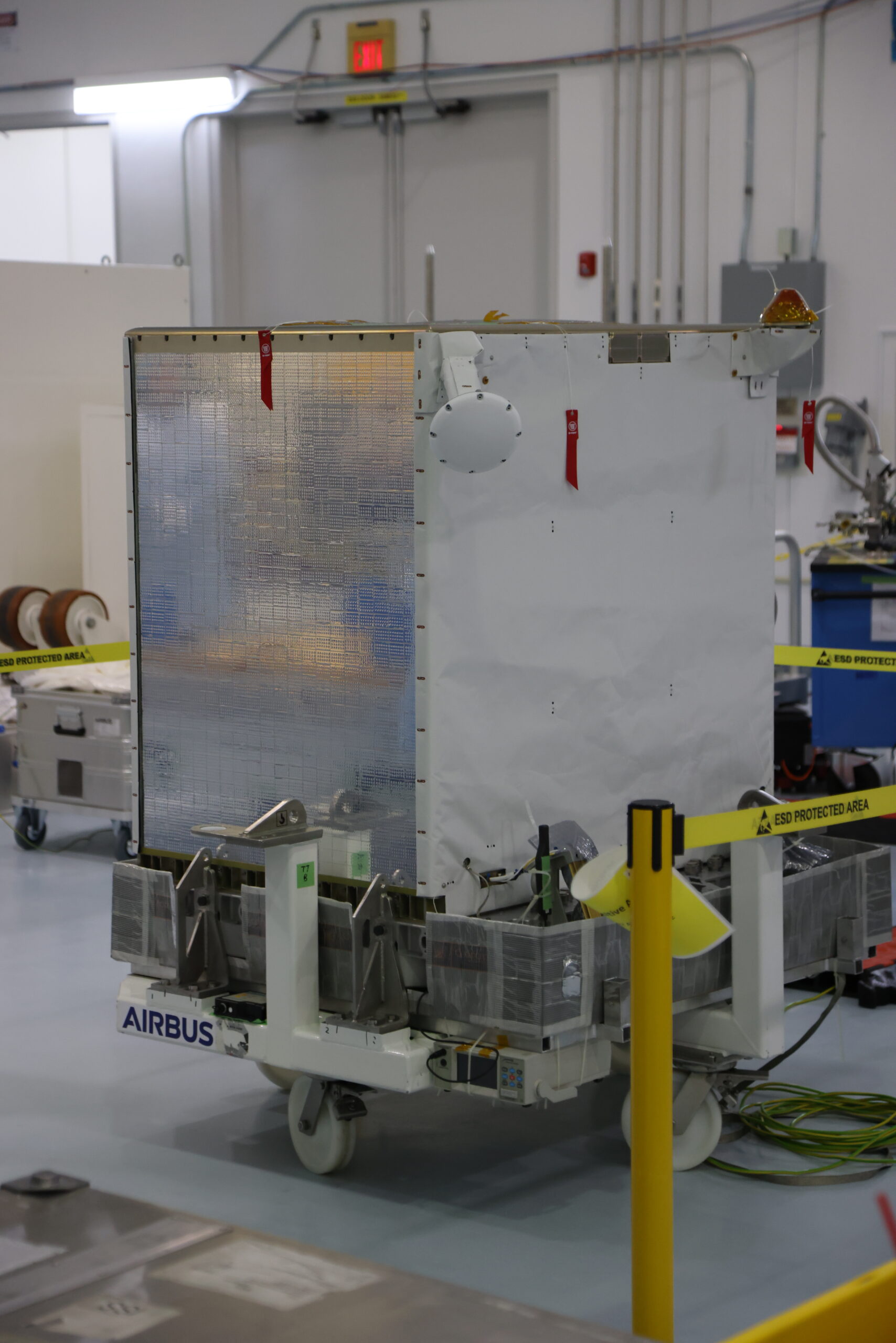
ACES at NASA’s Kennedy Space Center, in the Space Station Processing Facility cleanroom.
Credit: NASA-KSC
1) One second in 300 million years
ACES contains two-cutting edge clocks: PHARAO built by the French space agency CNES, and the Space Hydrogen Maser (SHM) developed by Safran Timing Technologies. ACES combines PHARAO’s incredible long-term accuracy with SHM’s exceptional short-term stability to create an ultra-stable and ultra-precise time signal. Together, these two clocks achieve a level of accuracy so high that ACES would lose just one second in 300 million years. For comparison, a quartz clock in your watch can lose a second in just a few days.

ACES in the NASA cleanroom in March 2025.
Credit: ESA-T. Peignier
2) Made in Europe
This ensemble was completely made in Europe. The two clocks, PHARAO and SHM, were made by CNES in France and Safran Timing Technologies in Switzerland respectively; the time transfer system was developed by Timetech in Germany; the experiment was assembled at Airbus in Friedrichshafen, Germany; and the mission will be operated from control centres in France and Germany (CADMOS and Col-CC). This mission is a testament to ESA’s commitment to innovation and international collaboration.

The ACES team at Airbus, Friedrichshafen, where the experiment was assembled.
Credit: ESA/Airbus
3) One mission to sync them all
As the International Space Station orbits Earth, sixteen times a day, ACES will use its advanced time transfer system to link up with ground-based clocks whenever it passes overhead. It will compare its own ultra-precise time – courtesy of PHARAO and SHM – with clocks on Earth, both those it can see at the same time, for example in neighbouring countries, and others spread across continents, by linking with them sequentially as it orbits. By combining microwave and laser links to cancel out atmospheric and other distortions, ACES can synchronise clocks worldwide with unprecedented accuracy.
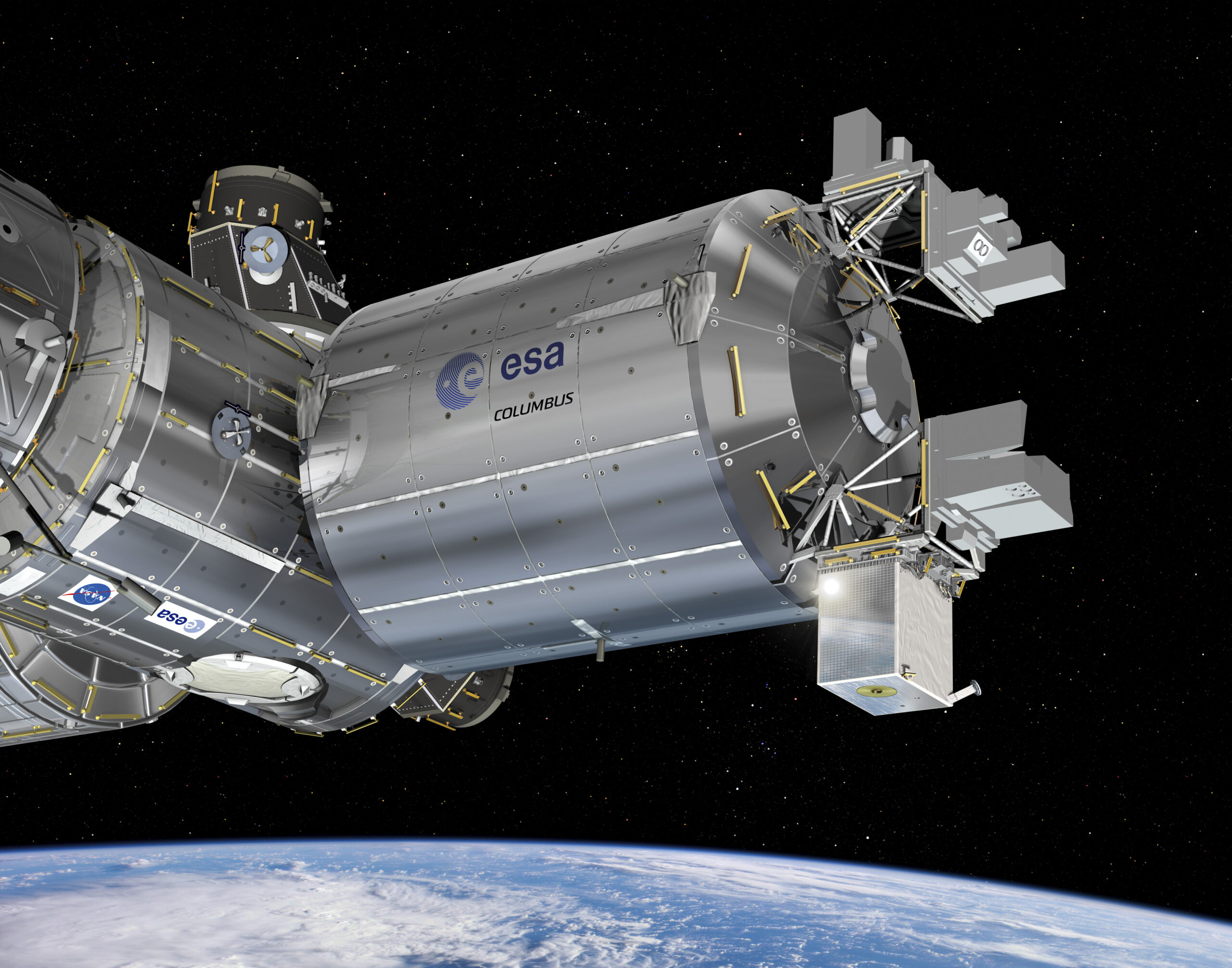
A rendering of ACES on the outside of ESA’s Columbus laboratory on the International Space Station.
Credit: ESA-D. Ducros
4) The coolest clock in space
Meet PHARAO, the first laser-cooled caesium atomic clock in space, developed by the French space agency CNES. At the Observatoire de Paris, caesium atomic clocks are used to define the standard of the second in Europe; PHARAO is based on the same technology, but in the microgravity of space, cold atoms stay still longer, allowing even more precise measurements of time. Find out more about how PHARAO works here.
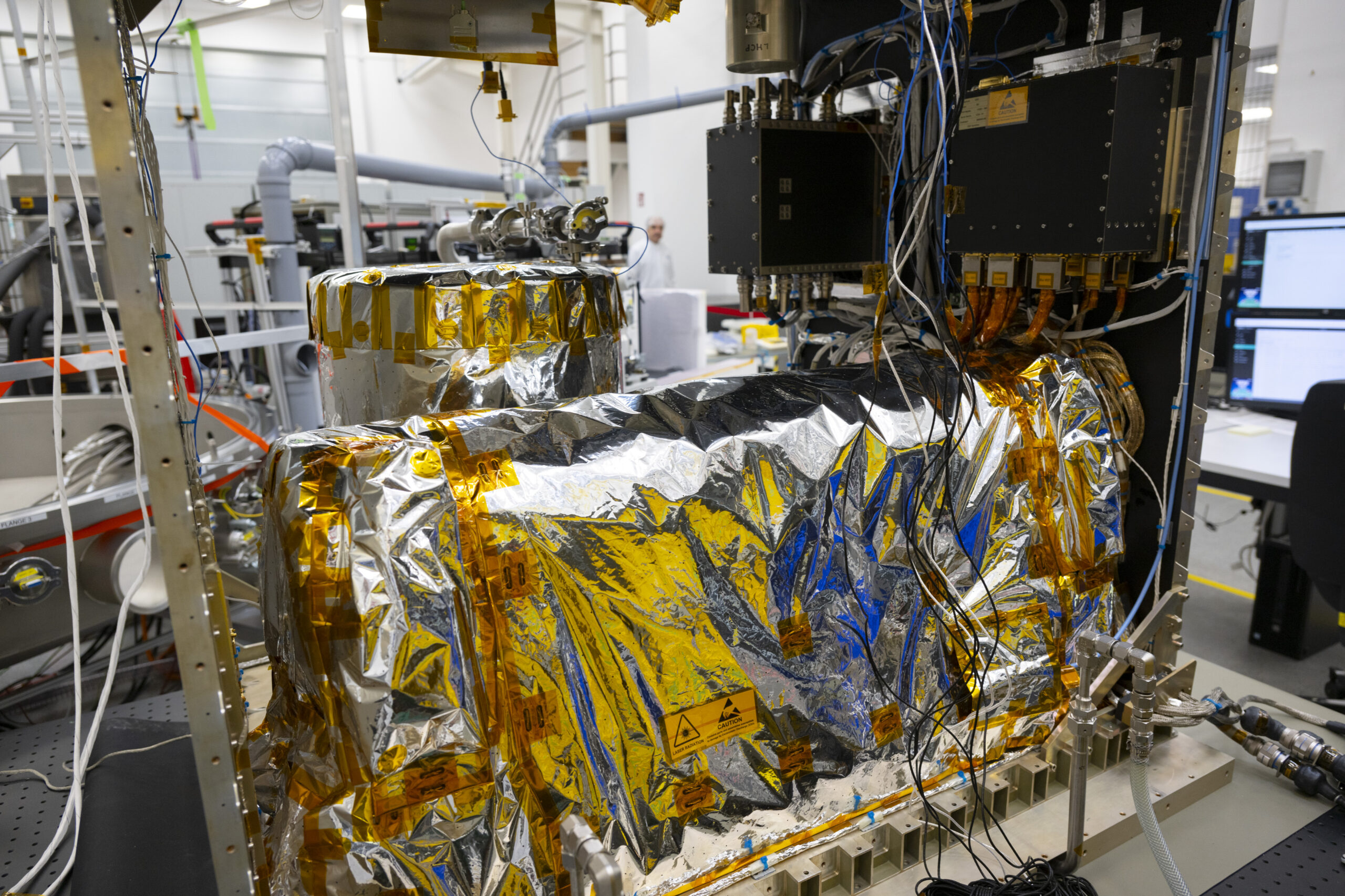
PHARAO in the cleanroom at Airbus in Friedrichshafen, Germany, in spring 2024.
Credit: ESA-S. Corvaja
5) The maser that’s mastering time
The Space Hydrogen Maser (SHM), built by Safran Timing Technologies in Switzerland, is a powerhouse of precision. This active hydrogen maser is ten times more accurate than the atomic clocks based on a similar technology within GPS and Galileo navigation satellites. Find out more about how SHM works here.
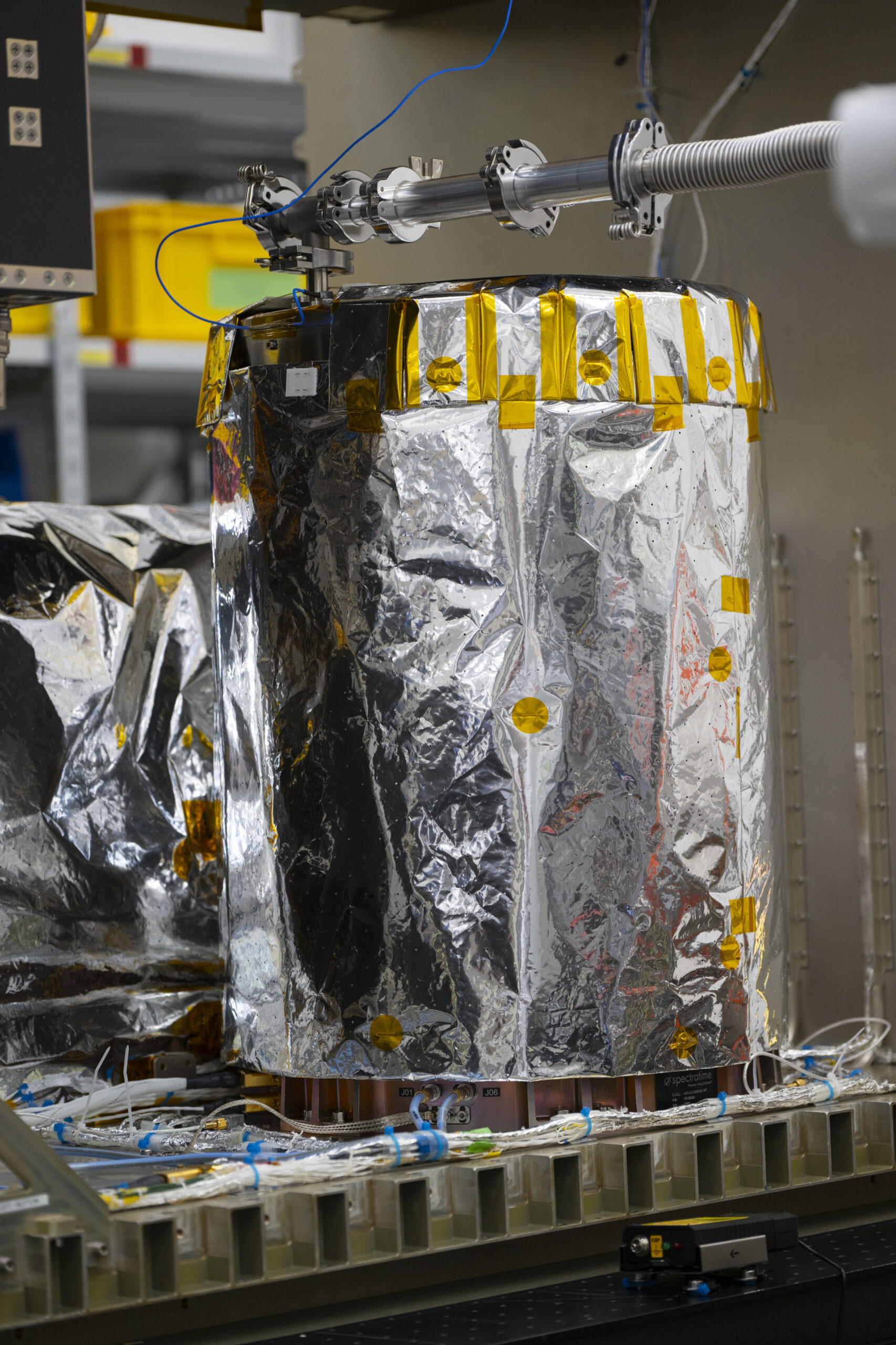
SHM (Space Hydrogen Maser) in the cleanroom at Airbus in Friedrichshafen, Germany, in spring 2024.
Credit: ESA-S. Corvaja
6) A new second?
ACES isn’t just measuring time – it could help redefine it. Today, the second is based on the consistent vibrations of caesium atoms in atomic clocks, similar to PHARAO. But by synchronising clocks around the world with unprecedented precision – including cutting-edge next-generation optical clocks – ACES could lay the groundwork for a new, even more accurate definition of the second, the fundamental unit of time.

ACES being lifted out of its transport container at NASA’s Kennedy Space Center on 14 March 2025.
Credit: ESA-T. Peignier
7) Einstein, meet ACES
According to Einstein’s theory of general relativity, gravity affects the passage of time, with clocks ticking more slowly closer to a massive object, such as Earth. This has been proven in experiments on mountaintops, but ACES will take the test even further, orbiting 400 km above Earth on the International Space Station. There, it will use its ultra-precise clocks to measure how gravity influences time with ten times more accuracy than any previous experiments.
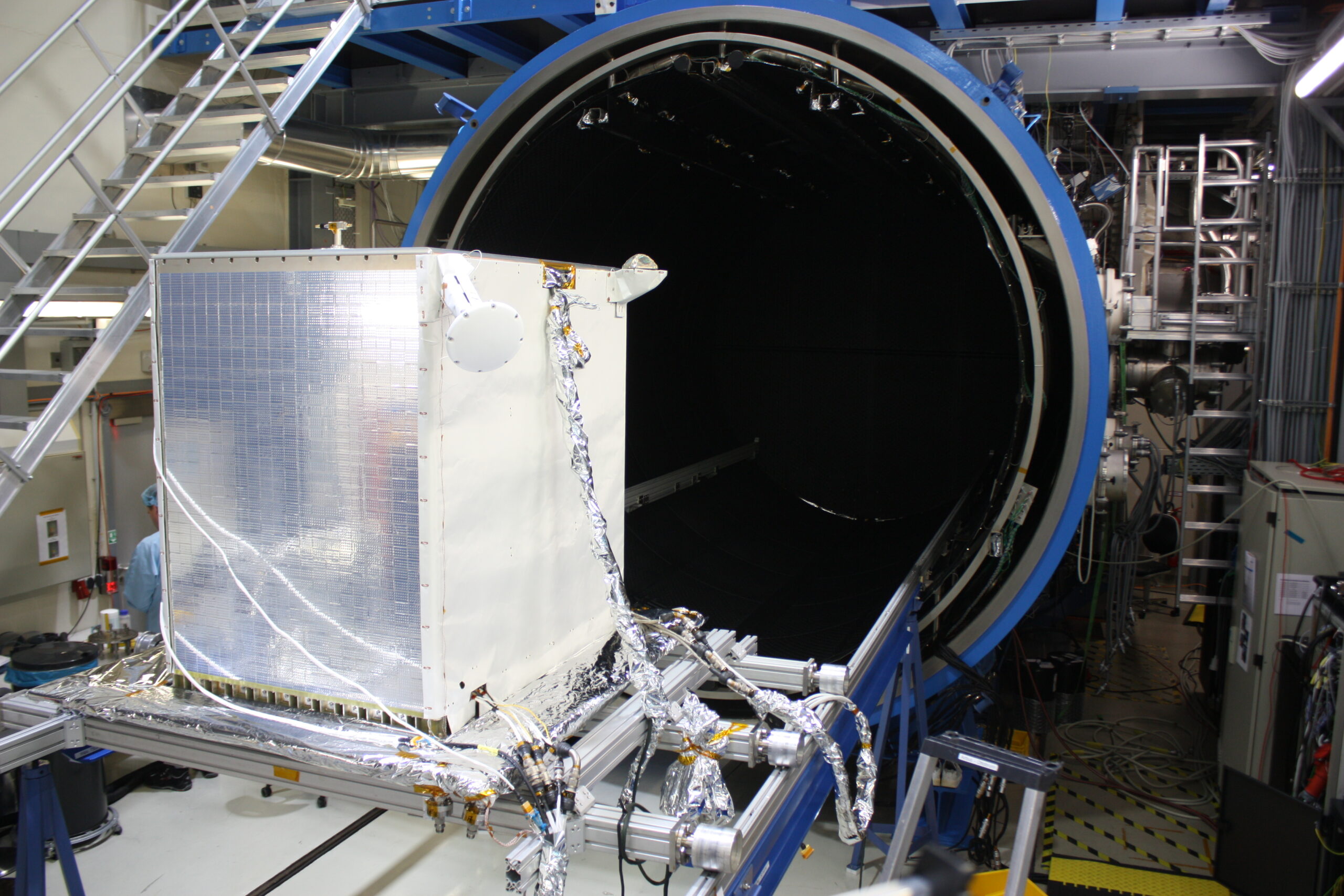
ACES at Airbus in Friedrichshafen, Germany, undergoing vacuum testing in 2024.
Credit: ESA/Airbus
Bonus: make your own space clock!
Would you like to hold the future of timekeeping in your hands? Build your own paper model of the ACES payload and join the countdown! Download the model here and instructions here.
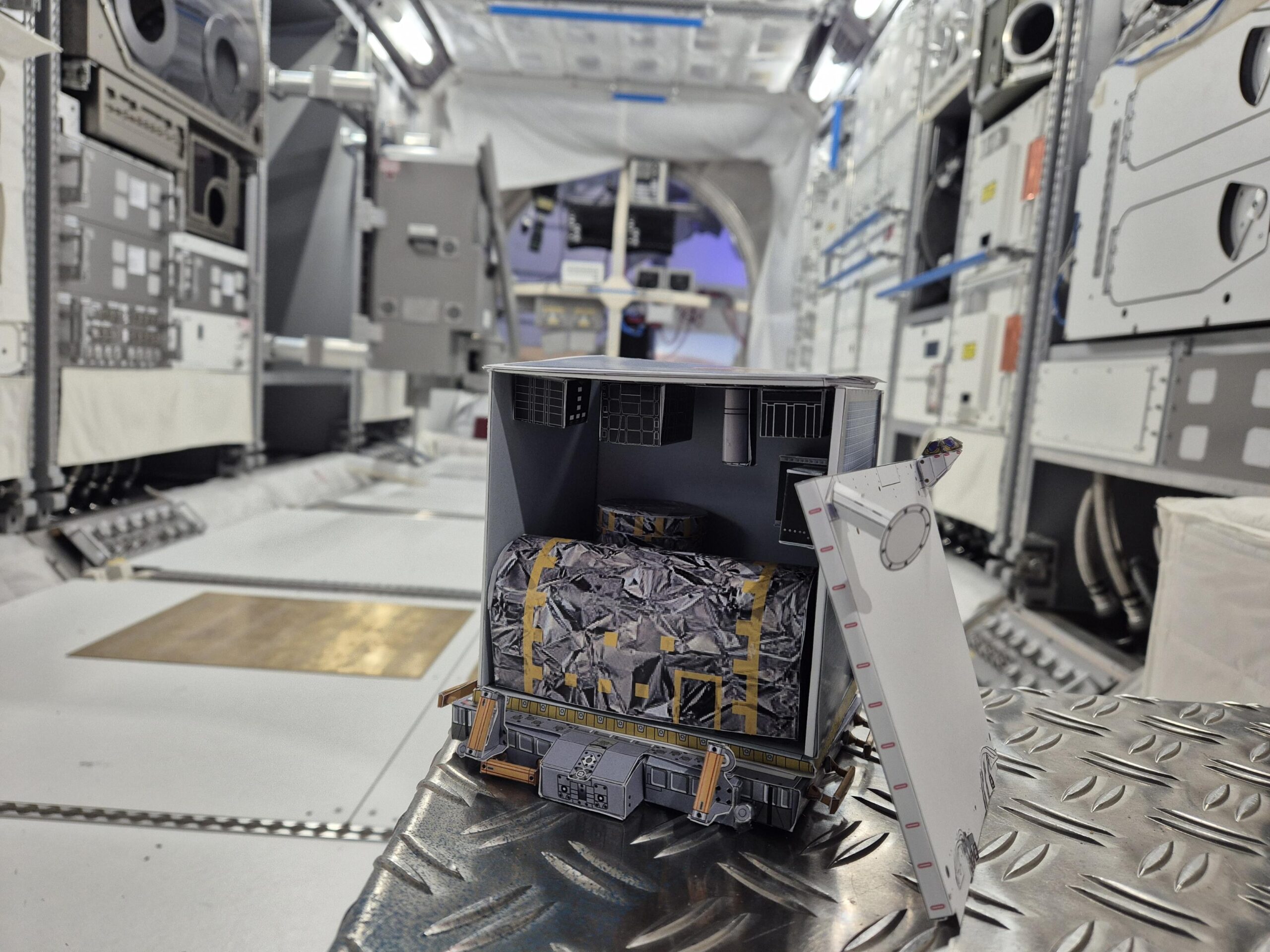
ACES paper model in the Columbus mock-up at ESTEC, ESA’s technical heart in the Netherlands.
Credit: ESA-M. Boere
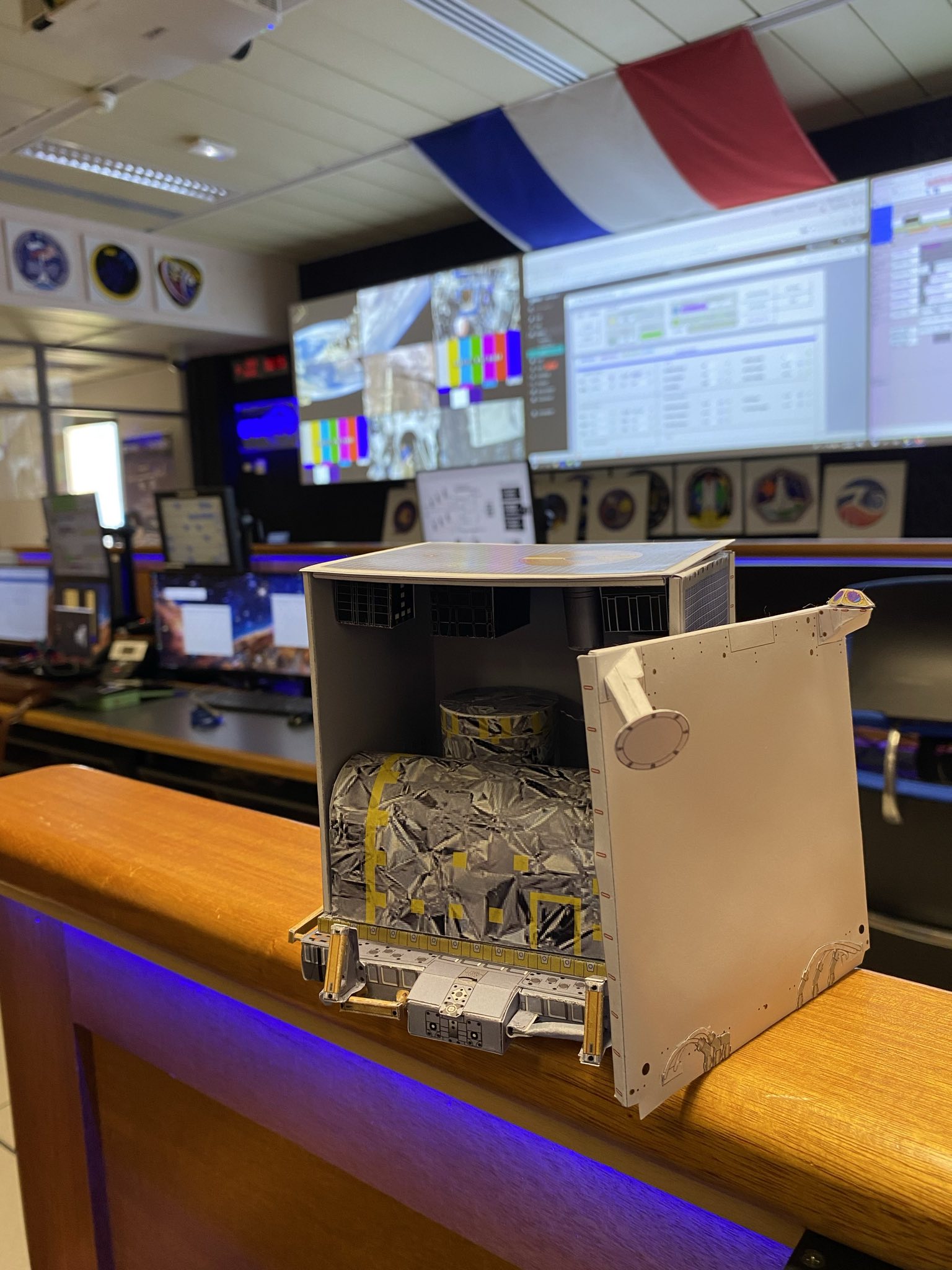
ACES paper model at CADMOS control centre in Toulouse, France.
Credit: CADMOS/E. Pellat
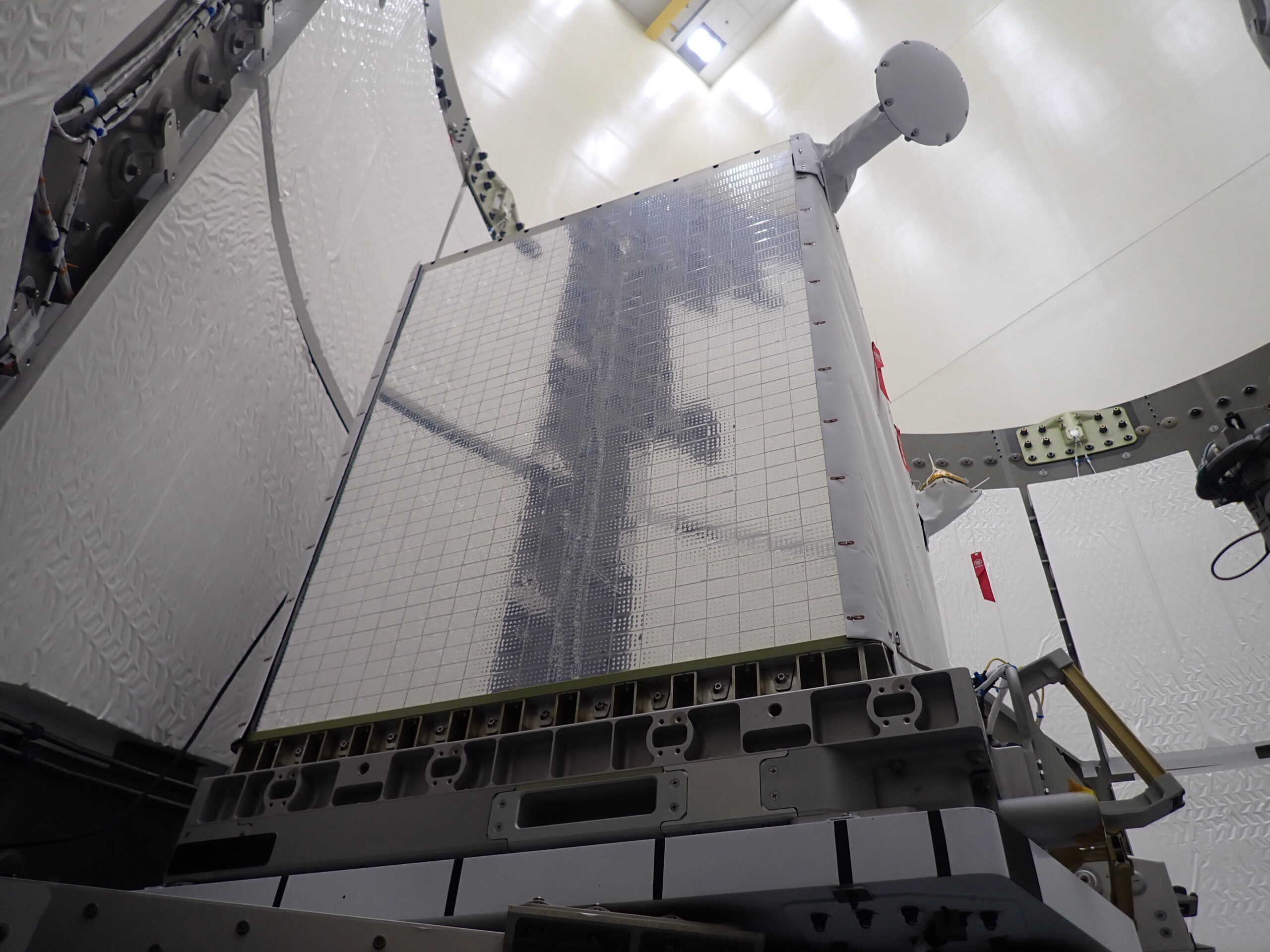
ACES is now ready for launch on SpaceX’s 32nd Commercial Resupply Service mission to the International Space Station, scheduled for 21 April 2025.
Credit: SpaceX
For more information on ACES, have a look at our previous articles and factsheet:
https://www.esa.int/Science_Exploration/Human_and_Robotic_Exploration/ACES_Atomic_Clock_Ensemble_in_Space
https://blogs.esa.int/exploration/the-clocks-of-aces/
https://www.esa.int/ESA_Multimedia/Images/2025/03/ACES_time_to_get_ready
https://esamultimedia.esa.int/docs/ACES_Factsheet.pdf



